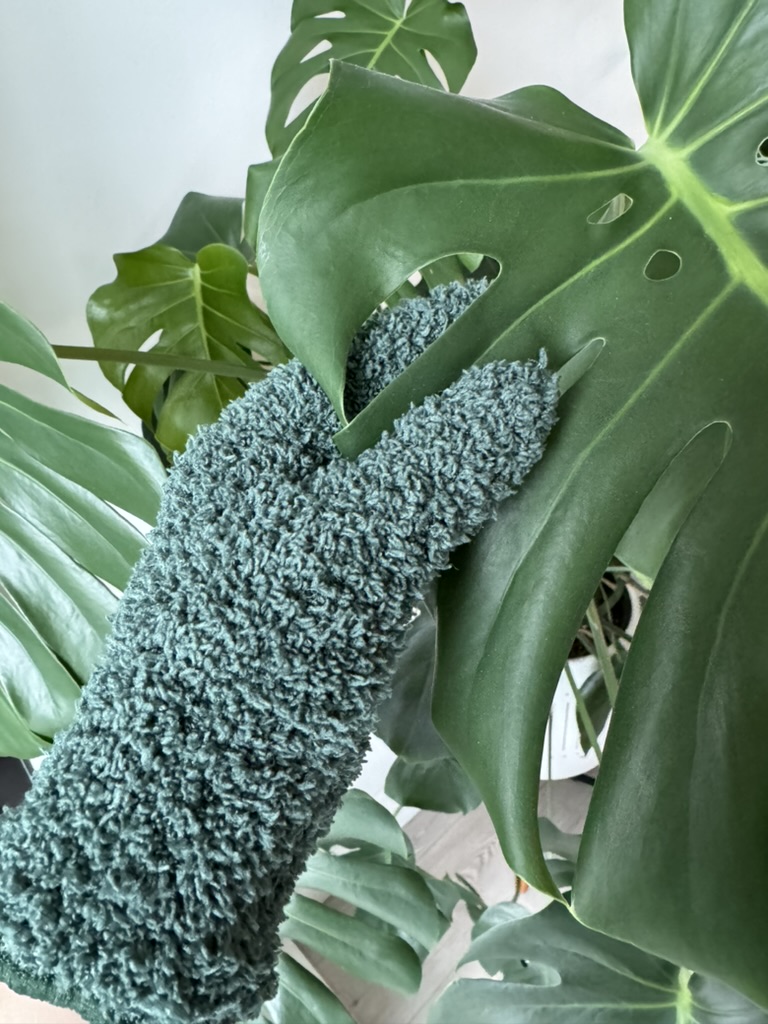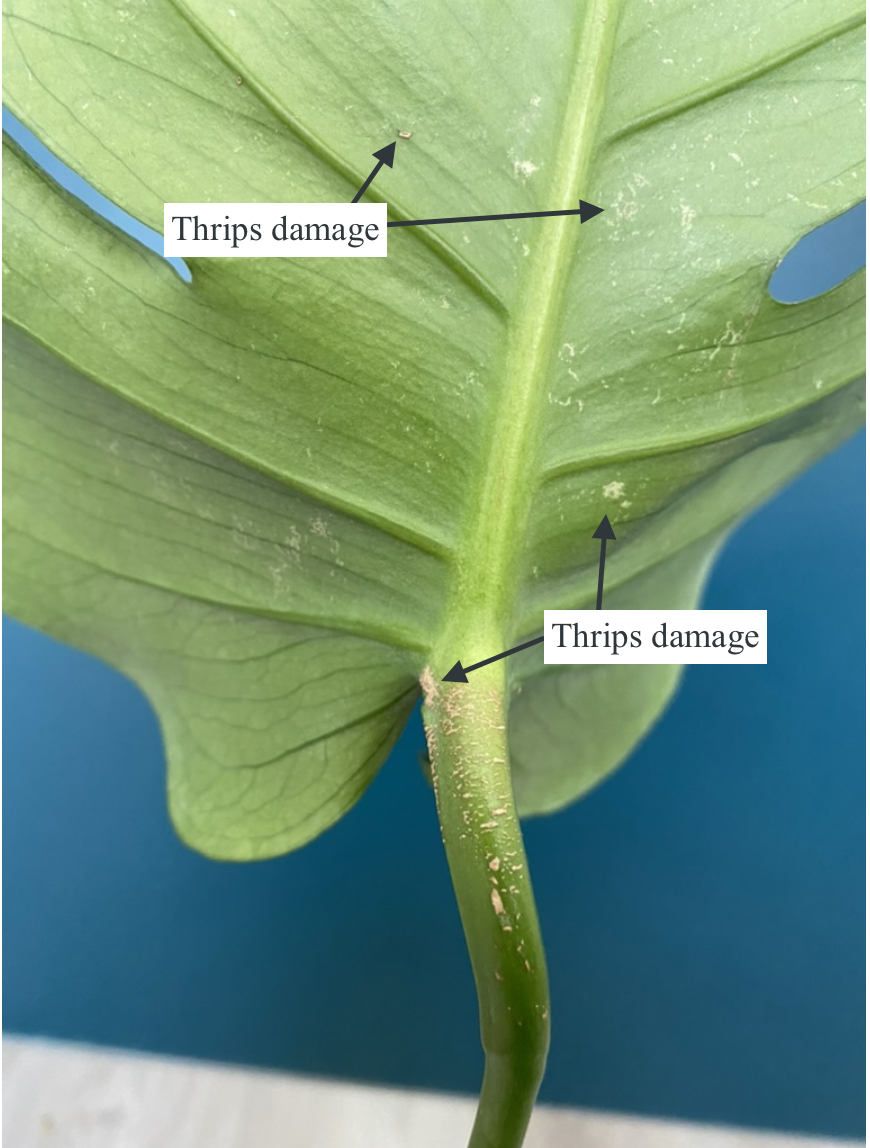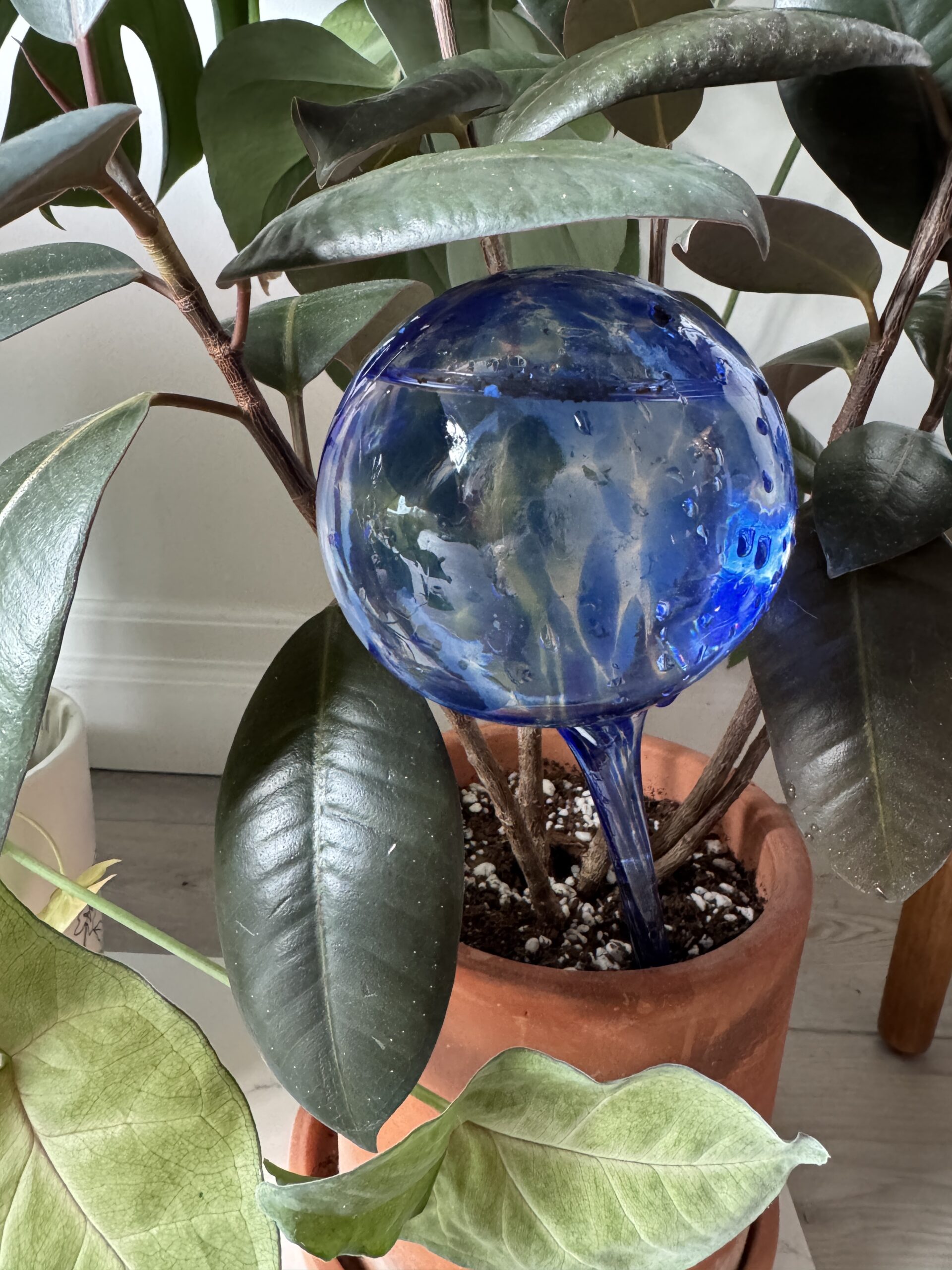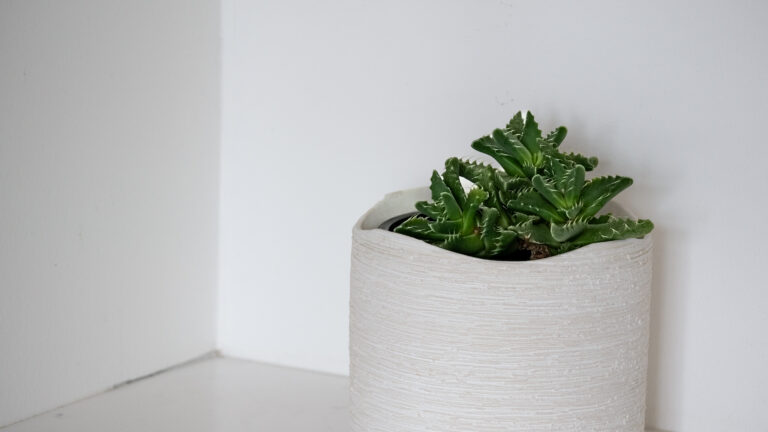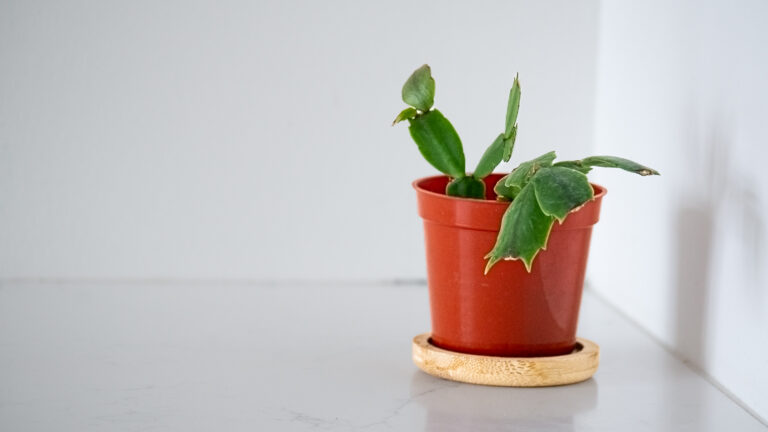Euphorbia Lactea or Candelabra Cactus is a member of the Euphorbiaceae family. It is native to India and Sri Lanka. It is a spurge and grows like a tree in its native environments.
Euphorbia Lactea is referred to as the Candelabra Cactus because it resembles a candelabra. It’s also referred to as Mottled Spurge or Dragon Bones Tree. The Lactea refers to the toxic sap that comes out of the plant if you break it open.
There are around 2000 species of the Euphorbiaceae family.
Candelabra Cactus at a glance.
Euphorbia Lactea Appearance & Growth Habit
Euphorbia Lactea resembles a candelabra with its upright stems. It is green with sometimes white or pink markings. Mine has whiter markings. Each segment has thorns.
Light Requirements for Euphorbia Lactea
Candelabra Cactus thrives in bright, medium-bright light. Euphorbia prefer a couple hours of bright afternoon sun, but the majority of the time it likes indirect light. Mine is currently in a south-west facing window, but it did well in a east window as well.
The brighter the light, the more the plant grows, but too much sun can cause sunburn.
Ideal Temperature & Humidity for Euphorbia Lactea
Euphorbia Lactea prefers a temperature between 18-24 degrees celsius, but can tolerate slightly lower temperatures in the winter. They also prefer lower humidity, but do well in average household humidity levels (40-60%).
I keep my Euphorbia Lactea closer to the window and away from the humidifier (I use the Levoit Hybrid Ultrasonic Humidifier (LV600HH)). I use my humidifier to ensure the humidity levels in my apartment stays between 40% and 60%. Since I live in Canada and the winters can be very dry, and the humidity can drop below 30% humidity, so its helpful to set the humidity at about 45% or 50% in this season to keep all of my plants happy.
Growth Rate & Fertilizer Needs for Euphorbia Lactea
On average, Euphorbia Lactea can grow up to 2 feet.
New foliage grows out of the main centre stem of the Candelabra Cactus. New growth is a brighter green and fades to a darker green as it edges. All stems grow thorns.
To encourage healthy growth, fertilize your Euphorbia Lactea with once a month during spring and summer months.
Euphorbia Lactea Blooming: What to Expect
As a houseplant, Euphorbia Lactea does not flower. In the wild, the Candelabra Cactus can flower. When Euphorbia Lactea does bloom, it produce its small, inconspicuous yellow-green flowers.
Most Euphorbia are grown for their striking, sculptural stems and unique crested or variegated forms as opposed to their blooms. If flowering does occur, it’s usually during the warmest months, outdoors, and when the Euphorbia reaches maturity.
When & How to Repot Euphorbia Lactea
Be careful repotting Candelabra Cactus as inside it contains a poisonous milky latex. I use thick gardening gloves when repotting my euphorbia (or other sharp plants like cacti) to ensure I don’t hurt myself. I love the gloves that I have because they are puncture resistant, but unfortunately they are no longer available. These gloves seem like a great alternative.
You will know it is time to repot your Euphorbia Lactea if it becomes really top heavy, you have to water it more frequently, growth has slowed, or the roots are circling or growing out of the bottom of the drainage hole of its pot. If you haven’t repotted this plant in two years, its best to refresh the soil, and if it hasn’t outgrown its pot, you can put it back into its existing pot (like I did in the video below).
The best time to repot is in spring or early summer, using a pot that 2″ larger (with a drainage hole) and filled with fresh, well-draining cactus mix. Always handle with gloves to avoid contact with the toxic sap.
To repot, grab a pot with a drainage hole, and cover the bottom with the fresh, well-draining cactus mix. Put your gloves on, and gently remove your Euphorbia from its current pot. Gently detangle the roots, and place the Euphorbia in the new pot with the new soil. If there isn’t enough soil in the bottom to where you want your Euphorbia to sit from the top, add more soil, and then put the Euphorbia back in. Fill in the pot with soil until it is 1″ from the top. Gently pat the soil so it is upright.
If your Euphorbia is leaning a lot, you may need to use a support and plant velcro to encourage it to grow straight. This is a good time to add in the support. Make sure your water your plant after your finish with your repot, and place it back in its original location in your home.
For everything you will need for repotting success of your Euphorbia Lactea, check-out my repotting essentials guide.
How to Propagate Euphorbia Lactea (Cuttings & More)
The easiest way to start a new Euphorbia Lactea is by stem cuttings, but be careful as the sap that comes out of the plant can irritate the skin. Make sure to wear proper protection when handling this plant.
Cuttings
Choose a stem from a healthy adult plant. Make sure the cutting has at least one node or this method won’t work. Wait for the cutting to callus over in a well lit spot. This should take a couple of days. Once the callus is formed, you can pot your Euphorbia into a well-draining potting mix.
You can also use rooting hormone on the cutting before putting it in the soil if you prefer. You won’t be able to see if the plant is rooting in the soil, but if the plant eventually dies, you know it didn’t root successfully.
Patience is key with propagation. Give your new Euphorbia time to settle into its environment. Once you see new growth, you know your plant is well established.
Watering Euphorbia Lactea: How & When
The Candelabra Cactus likes to dry out between waterings. To determine if your Euphorbia Lactea needs water, you can stick your finger in the soil (1 to 2 inches) and if it is dry, its ready for water!
If you don’t want to get your hands dirty, you can try a moisture meter (I personally have not used one, but I know quite a few people who do, and this one is really highly rated on Amazon).
Euphorbia typically needs to be watered every 4 weeks (depending on your environment). In the winter you can water less to give this plant a rest.
I typically bottom water this plant through the drainage hole of the pot on a tray. It’s the easiest way to know if your plant is thirsty or not. Overwatering can lead to fungus gnats, root rot, or the death of your plant.

You can top water, but it’s best to do so in a pot with drainage until water is flowing out of the hole. If your pot doesn’t have drainage, you might accidentally drown your plant or make some fungus gnats very happy.
You should top water from time to time to make sure any built up minerals can wash through the plant. The water should drip out of the bottom of your drainage hole.
If you are going on vacation, and worried about watering your Euphorbia Lactea, check-out my guide on 3 ways to keep your plants alive while away.
Common Pests & Problems in Euphorbia Lactea
Candelabra Cactus can face the following pests and problems.
Common Pests of Euphorbia Lactea
- Mealy Bugs: these look like little white cotton balls on the Euphorbia. You can remove these with your fingers if you catch them early enough, but I would use a cotton swab with a drop of Isopropyl alcohol and try to scrape them off the stem. Mealy Bugs are attracted to succulent sap.
- Spider Mites: If spider mites have taken to your Euphorbia, spray them with a mixture of neem oil, dish soap and water (or you can buy an insecticidal soap). I repeat this about once or twice a week (depending on the severity of infestation) for about a month. It’s also good to do this preventatively once a month or so. You will know you have spider mites if you see webbing and leaf damage. Learn how to eradicate Spider Mites.
- Fungus gnats: These likely will only appear if you overwater the Euphorbia, and root rot is starting. Spray the plant with a mixture of neem oil, dish soap and water. I also let the soil dry out and add dryer sheets on top of the soil so the gnats can’t sense the moisture on the soil.
Other Common Problems of Euphorbia Lactea
- Powdery Mildew: This looks white and moldy. This is caused my poor air circulation and too high of humidity. To eradicate this you can wash your Euphorbia with a mixture of one tablespoon of baking soda into a gallon of water.
- Overwatering: Root rot happens from overwatering your plant with insufficient drainage. You can improve the drainage of your Euphorbia by ensuring your plant is potted in a planter with a drainage hole and using a well draining soil (something with a decent amount of perlite). You can also end up with fungus gnats or fungal disease from overwatering.
- Underwatering: Even though plants prefer to be underwatered over overwatered, you still have to remember to water it on a consistent schedule. Signs of underwatering an include leaves becoming shrivelled, discoloured or dry.
- Sunburn: Even though you will often find this plant in bright, sunny environments, they can be burned. Just like in humans plants can burn. This plant turns kind of reddish when burning. To fix sunburn in the Euphorbia you can move it to a less sunny place, and it will correct itself.
- Cold temperatures: Damage from cold temperatures can lead to vulnerability to disease, visible discolouration, growth stagnation or death. You can prevent this by making sure your Euphorbia lactea is not exposed to environments below the recommended temperatures.
- Temperature Fluctuations: Euphrobia prefers stable temperatures, and is sensitive to cold drafts. Damage from cold temperatures can lead to vulnerability to disease, visible discolouration, growth stagnation or death. You can prevent this by making sure your plant is not exposed to environments below the recommended temperatures.
Euphorbia Lactea Toxicity
The sap of the Candelabra Cactus is toxic to humans and pets due to its sap, which contains compounds that cause irritation. Wear protection when handling the Euphorbia Lactea to avoid skin and eye irritation from the sap.
Contact with the sap can cause skin irritation or severe eye injury (if you touch your eyes after touching the sap). Ingestion of Euphorbia Lactea can lead to nausea, vomiting, and more serious symptoms. Always wear gloves when handling or pruning Euphorbia Lactea, and keep this plant out of reach of curious children and animals.
Euphorbia Lactea Quick Care Guide
| Scientific Name | Euphorbia Lactea |
| Nickname | Candelabra Cactus |
| Origins | India and Sri Lanka |
| Light | Bright, direct (only for a couple hrs a day) and indirect, medium-light for the remainder of the day |
| Temperature | 18 to 24 degrees celsius (preferred) |
| Humidity | Low, but does well in average humidity (40-60%) |
| Height | Up to 2 feet |
| Blooms | In the wild only |
| Propagate | Stem cuttings |
| Water Frequency | When dry (likely once a month) |
| Pests | Mealy Bugs, Spider Mites, Fungus Gnats |
| Common Problems | Powdery Mildew, Overwatering (root rot), underwatering, fungal disease, sunburn, cold temperatures |
| Toxicity | Toxic Sap |
References
Below is a list of external sources I consulted while writing this post. This post is a mixture of my own experiences, and the external sources listed below:
Epic Gardening – Euphorbia Lactea
Jomo Studio – Euphorbia Lactea

